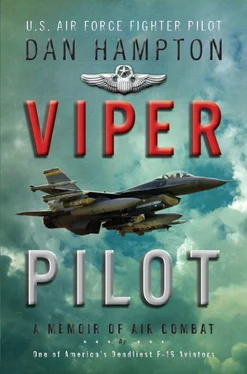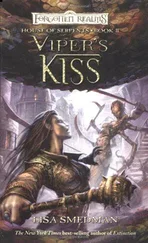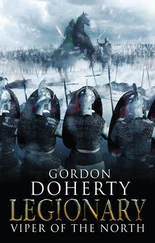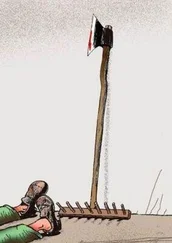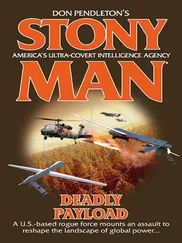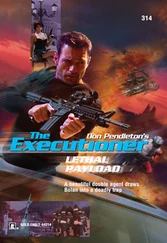To truly understand what I used to do and how I got there, you need to understand the mission itself. So, before we go any further, here’s a little history lesson.
SINCE MAN FIRST COMBINED FLIGHT WITH WARFARE, OTHER men have been trying to shoot aviators down. As early as the American Civil War, when manned balloons were used by Union forces to spot enemy troop movements, Confederate sharpshooters immediately started firing at them. Five years later, during the Franco-Prussian War, the Germans mounted a small cannon on a horse cart for the sole purpose of putting holes in French balloons.
With the advance of tactical aviation during World War I came corresponding advances in anti-aircraft capabilities. By December 1914, the British Royal Air Force had become sufficiently concerned about the German bomber threat to London that they developed a 37-mm pom-pom gun. In June 1917, their caution was justified when fourteen plywood-coated German Gotha V bombers lumbered over London at eighty knots and dropped their bombs. Among the 162 dead were 46 children killed when their kindergarten was destroyed. Within a year, twenty-eight of these “heavy” bombers had been shot down, stopping the raids. These missions, though puny by modern standards, marked the first real use of strategic airpower and ushered in the age of air defense.
As aircraft improved, the systems designed to kill them also became more lethal. Weapons that could bring down wooden bombers flying straight and level at eighty knots were hopeless against the much faster and more maneuverable planes of World War II. This meant more accurate aiming systems had to be fielded, which could cope with more aggressive targets. Eventually, the British developed the Kerrison Predictor. Though ineffective against fighters (it was designed to track bombers), it was the first truly automated Fire Control System.
Weapons improved as well. Ironically, two of the best pieces of anti-aircraft artillery (AAA, or Triple-A) came from neutral countries. Bofors, a Swedish company, manufactured a 40-mm piece which proved lightweight, rapid-fire guns were tactically feasible. Bofors also exemplified the concept of “business neutrality” by selling its weapons to both the Axis and the Allies. Incidentally, the man who transformed Bofors from producing raw steel to manufacturing armaments was Alfred Nobel, the inventor of dynamite. He also founded the Nobel Prize—for peace.
Swiss-built Oerlikon 20-mm cannons were used with much success during the war by both the United States Navy and the Royal Navy as short-range anti-aircraft weapons. Interestingly, derivatives of this cannon were standard armament in two of the greatest World War II Axis fighters: the Japanese Mitsubishi Zero and the German Luftwaffe’s Messerschmitt 109.
The Germans also developed Fliegerfaust, arguably the first surface-to-air missile system. This was a portable system that looked like a Gatling gun and fired manually aimed 20-mm rocket projectiles.
Wasserfall was a derivative of the large V-2 rockets being fired at British cities and factories. It had a radio-controlled aiming system called Manual Controlled to Line of Sight. This meant the operator had to manually track his target and steer the missile to intercept. Designed to counter the strategic threat posed by overwhelming numbers of American bombers, the system proved an abject failure.
The period between the end of the Korean War and the beginning of Vietnam saw tremendous technical advances in both aircraft and weapons. This resulted in the development of new air-combat missions, including close air-support and high-altitude precision bombing. There was also a reconnaissance aircraft, the U-2, that could operate higher than any gun could shoot or any fighter could fly. Such a capability would also put it beyond the range of surface-to-air missiles.
On April 9, 1960, an American pilot named Bob Ericson seemed to confirm this when he crossed the Pamir Mountains into the Soviet Union. MiG fighters, guns, and thousands of Russian curses failed to bring him down as he calmly flew over four of the most sensitive targets the Soviets possessed, including, somewhat ironically, their surface-to-air missile test center at Saryshagan.
But weeks later, on May 1, another U-2 pilot wasn’t so fortunate, and Francis Gary Powers suddenly became a household name. To the astonishment of the Air Force and CIA, his plane was brought down by several surface-to-air missiles. The Russians called it the S-75. (NATO, to keep everyone confused, named it the SA-2 Goa. There actually was an SA-1 system, but it was deployed around Moscow to stop American B-52 bombers.)
Thirty-five feet long and more than two feet in diameter, the SA-2 could reach speeds exceeding Mach 3 (three times the speed of sound, or about 2,600 miles per hour) on its way up to 80,000 feet. If this 5,000-pound flying telephone pole hit an aircraft, there wouldn’t be much left of it.
Fortunately for Gary Powers, radar-guided systems, though not new, were a long way from being perfected. This was an age of vacuum tubes and slide rules, not microchips and supercomputers, so figuring aiming solutions on jet aircraft seven miles above the earth was not a simple proposition. However, bombers and reconnaissance aircraft like the U-2, unlike fighters, fly nice, predictably straight lines, and this certainly helped three missiles detonate close enough to Powers’s U-2 to knock it down—thankfully, without obliterating the aircraft or himself. Powers was captured and humiliated, but he eventually returned home alive.
Another U-2 pilot, Major Rudolph Anderson, wasn’t so lucky. In October 1962, the South Carolina native was killed over Cuba by the same SA-2 system. During the past two years, the missile’s tracking had greatly improved, and the Cuban-launched weapon shattered Major Anderson’s U-2.
These incidents finally forced the Pentagon to seriously consider electronic countermeasures. These include radar-warning receivers, which tell a pilot that he’s being targeted; chaff-and-flare dispensers that would confuse tracking solutions; and offensive jamming pods that could deny or defeat enemy radars. It was a new field and all of this equipment was either primitive or nonexistent. Despite the U-2 losses, there was time, the Pentagon thought, to develop these capabilities.
IN THE EARLY 1960S, VIETNAM WASN’T REALLY ON ANY AMERICAN’S “give a shit” list, and by 1963, President John F. Kennedy had even publicly disengaged the United States from Southeast Asia. Unfortunately, he departed this world before we could extract ourselves from Vietnam, and in August 1964, two American destroyers—the Maddox and the Turner Joy —were “attacked” in the Gulf of Tonkin. President Lyndon Johnson now had his excuse to go to war, and the subsequent Tonkin Resolution permitted combat operations without a congressional declaration of war. Despite the rather silly notion that two U.S. destroyers had been attacked by the North Vietnamese riverboat navy, the president could now fight whomever he wished.
And that’s precisely what he did.
As usual, America’s involvement started with air and sea power. Flaming Dart, Rolling Thunder, and Arc Light were air campaigns designed to protect U.S. ground troops and destroy the North Vietnamese capability to fight the war. However, by March 1965, some 3,000 Marines had been deployed into Vietnam, and by December that number reached 200,000.
To counter this, Hanoi began importing huge amounts of Soviet hardware, including the latest surface-to-air missile systems and anti-aircraft artillery. You see, the Vietnamese knew they could win a ground war. They simply had to wear the Americans down and outlast their political willpower, just as they did the French during the 1950s. But the Americans were different. They had air support with advanced capabilities the French had never possessed and stopping them was a serious tactical problem. The Vietnamese needed modern air-defense technology and again turned to the Soviet Union. The Russians, of course, were happy to oblige, since they got to test their equipment and kill Americans.
Читать дальше
